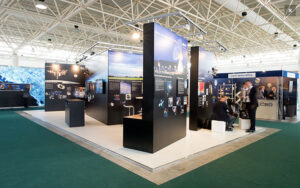Exhibiting at trade shows and conferences can significantly boost your brand visibility, generate leads, and foster industry connections. However, without proper organization, even the best exhibition booth can fall short. This exhibition planning template provides a step-by-step guide to ensure your next event runs smoothly—from setting goals to post-show follow-up.
1. Setting Clear Goals for Your Exhibition Participation
Before diving into logistics, define what success looks like for your exhibition.
Key Questions to Ask:
✔ What are your primary objectives?
- Brand awareness
- Lead generation
- Product launches
- Networking
✔ How will you measure success?
- Number of leads collected
- Social media engagement
- Sales conversions post-event
✔ Who is your target audience?
- Industry professionals
- Potential clients
- Media & influencers
Pro Tip: Use the SMART framework (Specific, Measurable, Achievable, Relevant, Time-bound) to refine your goals.
2. Building a Detailed Exhibition Plan Timeline
A structured timeline keeps your team on track. Below is a sample exhibition plan schedule:
6-12 Months Before
- Research and select the right exhibition center
- Book booth space early for prime location
- Define budget (booth design, marketing, travel)
3-6 Months Before
- Finalize exhibition booth design and branding
- Order promotional materials (brochures, banners, giveaways)
- Train staff on product knowledge and engagement strategies
1-2 Months Before
- Confirm logistics (shipping, permits, insurance)
- Launch pre-event marketing (email invites, social media)
- Schedule meetings with key clients or partners
1 Week Before
- Pack essentials (tools, spare equipment, branded items)
- Conduct a team briefing on roles and expectations
Event Day
- Arrive early for setup
- Engage attendees with interactive demos or contests
3. Managing Logistics, Permits, and Booth Setup
Essential Logistics Checklist:
✔ Venue Requirements
- Electrical outlets, Wi-Fi, and rigging permissions
- Floor load limits for heavy displays
✔ Permits & Insurance
- Fire safety certificates
- Liability insurance for accidents
✔ Booth Setup
- Ensure all exhibition booth components arrive undamaged
- Test AV equipment (screens, microphones) beforehand
✔ Shipping & Storage
- Label all crates clearly
- Arrange for storage of extra materials during the event
Ment Ads Insight: Visit the exhibition center beforehand to plan booth placement and foot traffic flow.
4. Coordinating Your Team and On-Site Roles
Your team’s performance can make or break your exhibition success.
Assign Clear Roles:
| Role | Responsibilities |
|---|---|
| Booth Manager | Oversees setup, troubleshoots issues |
| Engagers | Initiates conversations with attendees |
| Product Experts | Conducts demos and answers technical questions |
| Lead Collectors | Scans badges or collects contact info |
Team Training Tips:
✔ Practice elevator pitches (keep them under 30 seconds).
✔ Use role-playing to handle common attendee questions.
✔ Set daily debriefs to adjust strategies as needed.
5. Post-Exhibition Follow-Up and Performance Evaluation
The real work begins after the event ends.
Immediate Actions (Within 48 Hours):
✔ Organize leads in a CRM system.
✔ Send personalized thank-you emails with relevant content (e.g., product PDFs).
Performance Evaluation Metrics:
✔ Lead Conversion Rate – How many leads turned into customers?
✔ ROI Calculation – Compare revenue generated vs. exhibition costs.
✔ Social Media Reach – Track hashtags and post-event engagement.
Long-Term Strategies:
✔ Nurture leads with follow-up calls or demos.
✔ Gather team feedback to improve future exhibitions.
Final Thoughts
A well-executed exhibition planning template ensures you maximize ROI and leave a lasting impression. From goal-setting to post-event analysis, every step matters in delivering a seamless experience.
Need expert help? Ment Ads specializes in end-to-end exhibition management—contact us today!
FAQs
1. How early should I book an exhibition space?
At least 6-12 months in advance for prime locations.
2. What’s the most common mistake in exhibition planning?
Underestimating setup time—always allocate extra hours.
3. How can I stand out in a crowded exhibition hall?
Use interactive tech (AR/VR), bold visuals, and engaging giveaways.




